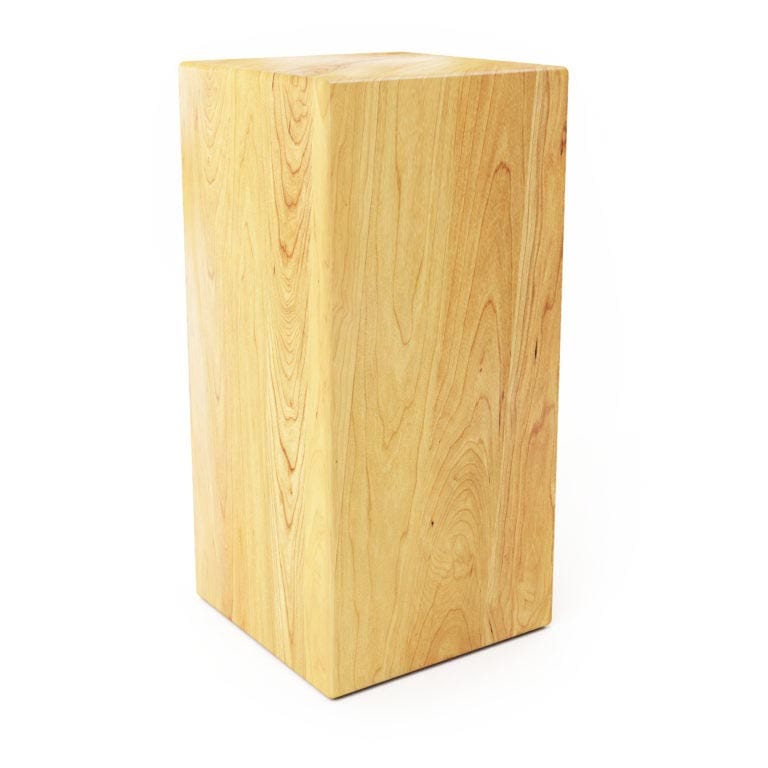Volume of Rectangular Prisms
 All Classroom Lessons
All Classroom Lessons
A Lesson for Grade 5
Nancy C. Anderson, Suzanne H. Chapin, and Catherine O’Connor

In previous lessons, students built rectangular prisms using cubic units and determined the volume of the prisms by counting cubes. Students started to devise methods for finding the volume of any rectangular prism without counting. In this lesson, students continue their work on developing a method for determining the volume of any rectangular prism. They share their methods with each other and discuss similarities and differences between the methods. One goal of the lesson is to help students articulate how volume can be determined by finding the number of cubes in each layer of a prism. If students know the number of cubes in one layer, they can multiply that amount by the number of layers, or height of the rectangular prism. The method of multiplying the dimensions is then connected to the idea of layers.
Professional Development Sessions
1.2, 1.3, 1.4, 1.5, 6.2, 7.2, 8.3
Video Clips
Refer to the demographics table in Classroom Discussions: Seeing Math Discourse in Action, Grades K–6, page xxxvi.
Time
- approximately 45 minutes
Materials
- interlocking cubes
- 3-by-4-by-5 rectangular prisms, 1 per group of 3–4 students
Vocabulary
cubic units, rectangular prism, volume
Common Core State Standards for Mathematics
Measurement and Data: Standard 5.MD Understand concepts of volume and relate volume to multiplication and addition.
Identifying the Mathematical Goals
Students will:
- learn a method for finding the volume of a rectangular prism based on the number of layers in the prism
- connect the method of multiplying the dimensions to finding the number of cubes in the base layer (l x w) and
- multiplying by the height h
- review the units used when determining volume of rectangular prisms (cubes or cubic units)
Anticipating Confusion
- Students may confuse measuring volume with measuring surface area.
- Students may not visualize a prism as consisting of layers of cubes.
- Students may refer to volume devoid of units of any kind and not realize the importance of the type of unit.
Asking Questions
- What does it mean to find the volume of a prism?
- How can we use multiplication to find the number of cubes in one layer of a rectangular prism?
- How can we use multiplication to find the total number of cubes in a rectangular prism?
- Explain why your method works to find volume.
- How is multiplying the dimensions to find the volume similar to using the layers approach?
- What type of units are needed to measure volume? Why do we use that unit instead of others such as . . .
- (fill in depending on response from students).
Planning the Implementation
1. Begin this lesson by reviewing the terms rectangular prism, volume, and cubic unit. Ask students, “What does each term mean?” Conduct a brief whole-class discussion about each definition.
2. Connect to the previous class periods where students spent time finding the volume of rectangular prisms: “Over the past few days, many of you have developed methods for finding the volume of any rectangular prism. Today, I’d like for us to talk as a whole class about our methods.” Write the following where everyone can see it: Method for finding the volume of a rectangular prism. Say, “As a group, develop a method for finding the volume of a rectangular prism.” Let students work in groups of three or four for about eight to ten minutes. Give the groups interlocking cubes to help them develop their methods.
3. Post each group’s method where everyone can see it. Withhold comments or corrections. If groups have identical methods, post the methods both times.
4. Say, “We have several different methods. Before we think about whether they work for all prisms, let’s test them with one prism. With your partner, see if you can apply each of the methods displayed to a three-by-four-by-five-unit prism. If you get stuck, think about how you might edit the method so that it works. If the method does work, think about why it works and whether it will work for all rectangular prisms.” Give students time to do this with their partners.
5. Conduct a whole-class discussion to discuss certain methods.
a. Briefly discuss which methods may need a little revision or editing. If a student makes a suggestion on how to revise a method that he or she did not write, check back with the students who wrote it. For example, “What do you think about that suggestion? Do you think it makes sense to add it to what you wrote? Why?”
b. Pick the methods you would like everyone to discuss based on the mathematics. Namely, focus the discussion on methods that involve layering—finding the number of cubes in one layer by multiplying length × width, then multiplying this by the number of layers, which is the height of the prism. Any time a student uses language associated with layering, ask at least two other students to repeat it. Ask students if they agree or disagree that the method would work for all rectangular prisms and why.
c. If a group has suggested multiplying length × width × height, first have students discuss why this method works. Ask other students to explain why they agree or disagree that this method would work for all rectangular prisms. Then ask, “How is this method similar to the layering method? How is it different?” Share students’ ideas.
6. Summarize the key mathematical points. Say, “We have discussed several different methods but all of these methods have one thing in common. They all involve finding the volume by determining the number of cubes in one layer and then multiplying that by the number of layers.”
Featured in Math Solutions Online Newsletter, Issue 39

Comments